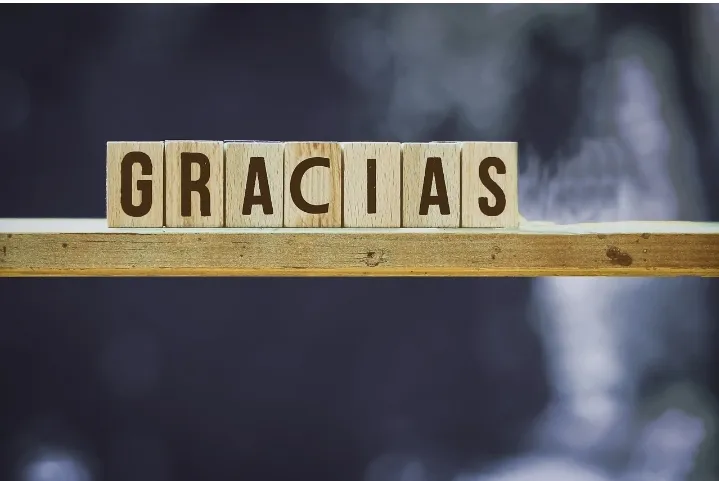
[... It is not a feeling that is kept silent, but rather shared, ritualized, and served on a golden platter of growth personal...]

Greetings, friends of #holoslotus
It's a true pleasure to return to this community!!
I suggest you take a second of the most precious thing we have, our time, to say "thank you." And in that kind spirit, I invite you to talk about painting, and to talk about gratitude.
The first paintings I saw in my childhood were the landscapes of the marabuzal forest where I was born. Those greens, the light filtering through the leaves, the reflection of the water—all of that was my first art gallery.
When I started school, some illustrations in books opened my eyes to a new universe. Even before that, in the books my grandmother bought me, there were already images that caught my attention; they were drawings that promised other realities.
Although obviously I didn't know what the word "reality" meant. That's the great blessing of childhood. Everything tends to be magical. Or at least in my childhood.
Later, the world was wide and mine, and the concerns of age led me to conquer, step by step, with curiosity, the piece of art history that was my due.
Along the way, I discovered the great masters of visual art. That's where Norman Rockwell comes into play. I've been fascinated by his gift for capturing the essence of life, everyday moments that become universal.
His works, more than telling a story, invited you to feel it. Of all his creations, there's one that has always struck a chord with me: "Saying Thank You."
When our friend @abelarte invited us to participate in his initiative on gratitude, I instantly thought of this piece and this author.

"Saying Thanks" is a 1951 painting designed for the cover of The Saturday Evening Post's Thanksgiving edition. It's more than an image; it's a frozen moment that radiates stillness amidst the hustle and bustle. The painting, executed in oil on canvas, has become an iconic piece, now part of a private collection.
What it depicts is, in its simplicity, extraordinary. In a restaurant, we see a woman and a small child, heads bowed, uttering a prayer of thanksgiving, in a moment of contemplation, an oasis of faith amidst the turmoil. Around them, other diners observe the scene. Some with curiosity, others with respect. It is this tension between the public and the private that gives the painting its power.
Inspiration came from a reader, who reported seeing a Mennonite family praying in a restaurant. That seed germinated in the artist's mind. Rockwell left nothing to chance. He visited Automats in New York and Philadelphia. His obsession with authenticity was legendary. For this piece, he brought a diner's table and chairs into his studio. He staged scenes with friends as models, took hundreds of photographs, and created sketches before the final image.
Recognition was swift. Rockwell was paid $3,500 for the work. But the real prize came in 1955, when readers voted "Saying Thank You" their favorite cover of all time. This painting was exhibited in twelve museums before its sale in 2013.

For me, this piece goes beyond its artistic value. It is an explosion of the beauty that lies in the act of giving thanks, in the ability to find peace in a noisy world. The gaze of the other diners makes us accomplices in the scene. It invites us to pause, to reflect on what we value. It's a silent lesson about the importance of faith and human interconnectedness. Rockwell captured a feeling, a truth.
And this makes me think about how powerful it is to always find a moment for gratitude, even in the most unexpected places. Giving thanks connects us to what's essential and imbues the simple with meaning.
This painting elevates gratitude to a communal act. It's not a sentiment kept silent, but rather one that is shared, ritualized, and served on a golden platter of personal growth. It's like a "thank you" said in chorus. A restless light and the letting go of other people's logs on the long and winding road of life.
Feeling grateful for a roof over our heads, a warm meal, and loyal company—the kind that makes us grow and is nourished by our presence—stepping away from the paths that distance us from what's essential, leaving behind the precipice of those desirable absences—is the foundation of a full life.

I feel like Rockwell is speaking to me through his painting, telling me that gratitude needs an altar. A space and time to be named and celebrated. I think he's inviting me to create my own table, where I can pause the daily grind and acknowledge, out loud, what I have.
Rockwell doesn't paint opulence. He paints abundance. The faces don't reflect euphoria, but contentment. The tablecloth is wrinkled, the tableware is simple. Wealth here isn't in the lust for gold, but in human warmth, in the security of being part of something that sustains you and you sustain. That's what it's all about.

🫂 El hermoso camino de la gratitud|REFLEXIÓN

[... No es un sentimiento que se guarda en silencio, sino que se comparte, se ritualiza y se sirve en una bandeja dorada de crecimiento personal...]

¡ Saludos, amigos de #holoslotus
Es un verdadero placer regresar a esta comunidad!!
Les propongo tomen un segundo de lo más preciado que tenemos, nuestro tiempo, para decir "gracias". Y en ese espíritu bienhechor les invito a hablar de pintura, y a hablar de gratitudes.
Las primeras pinturas que contemplé en mi niñez eran los paisajes del marabuzal donde nací. Aquellos verdes, la luz filtrándose entre las hojas, el reflejo del agua, todo eso fue mi primera galería de arte.
Cuando entré a la escuela, algunas ilustraciones en los libros me abrieron los ojos a un nuevo universo. Incluso antes, en los libros que me compraba mi abuela, ya había imágenes que me llamaban la atención, eran dibujos que prometían otras realidades.
Aunque obviamente yo no sabía qué significaba la palabra realidad. Esa es la gran suerte de la niñez. Todo suele ser mágico. O al menos de mi niñez.
Después, el mundo fue ancho y fue mío, y las inquietudes de la edad me hicieron conquistar, paso a paso, con curiosidad, el pedazo que me correspondía de la historia del arte.
En ese camino, descubrí a los grandes maestros del arte visual. Ahí es donde Norman Rockwell entra en escena. Me ha fascinado su don de capturar la esencia de la vida, momentos cotidianos que se vuelven universales.
Sus obras más que contar una historia, te invitaban a sentirla. De todas sus creaciones, hay una que siempre me ha tocado una fibra particular: "Decir Gracias".
Cuando el amigo @abelarte nos invitó a participar en su iniciativa sobre la gratitud al instante pensé en esta pieza y en este autor.

"Decir Gracias" es un cuadro de 1951, diseñado para la portada de la edición de Acción de Gracias de The Saturday Evening Post. Es más que una imagen, es, un instante congelado que irradia quietud en medio del bullicio. La pintura, ejecutada en óleo sobre lienzo, se ha convertido en una pieza icónica, hoy parte de una colección privada.
Lo que representa es, en su simplicidad, extraordinario. En un restaurante, vemos a una mujer y a un niño pequeño, con la cabeza inclinada, pronunciando una oración de agradecimiento, en un momento de recogimiento, un oasis de fe en medio de la vorágine. A su alrededor, otros comensales observan la escena. Algunos con curiosidad, otros con respeto. Es esa tensión entre lo público y lo privado lo que le da a la pintura su poder.
La inspiración le llegó de un lector, quien relató haber visto a una familia menonita rezando en un restaurante. Esa semilla germinó en la mente del artista. Rockwell no dejó nada al azar. Visitó Automats en Nueva York y Filadelfia. Su obsesión por la autenticidad era legendaria. Para esta pieza, llevó la mesa y las sillas de un comensal a su estudio. Montó escenas con amigos como modelos, tomó cientos de fotografías y creó bocetos antes de la imagen final.
El reconocimiento no tardó. A Rockwell le pagaron 3,500 dólares por la obra. Pero el verdadero premio llegó en 1955, cuando los lectores votaron a "Decir Gracias" como su portada favorita de todos los tiempos. Esta pintura se exhibió en doce museos antes de su venta en 2013.

Para mí, esta pieza va más allá de su valor artístico. Es una explosión de la belleza que reside en el acto de agradecer, en la capacidad de encontrar paz en un mundo ruidoso. La mirada de los otros comensales nos hace cómplices de la escena. Nos invita a detenernos, a reflexionar sobre lo que valoramos. Es una lección silenciosa sobre la importancia de la fe y la interconexión humana. Rockwell capturó un sentimiento, una verdad.
Y esto me hace pensar en lo poderoso que es siempre encontrar un momento para la gratitud, incluso en los lugares más inesperados. Agradecer nos conecta con lo esencial y llena de significado lo simple.
Esta pintura eleva la gratitud a un acto comunitario. No es un sentimiento que se guarda en silencio, sino que se comparte, se ritualiza y se sirve en una bandeja dorada de crecimiento personal. Es como un "gracias" dicho en coro. Una inquieta luz y un soltar leños ajenos en el largo y tortuoso camino de la vida.
Sentirse agradecido por un techo, una cena caliente y la compañía leal, esa que nos hace crecer y se nutre de nuestras presencias, apartarnos de los caminos que nos alejan de lo esencial, dejar atrás el precipicio de esas ausencias deseables, es el fundamento de una vida plena.

Yo siento que Rockwell me habla a través de su pintura, y me está diciendo que la gratitud necesita un altar. Un espacio y un tiempo para ser nombrada y celebrada. Creo que me invita a crear mi propia mesa, donde pausar la carrera diaria y reconocer, en voz alta, lo que tengo.
Rockwell no pinta la opulencia. Pinta la abundancia. Los rostros no reflejan euforia, sino contento. El mantel está arrugado, la vajilla es sencilla. La riqueza aquí no está en la lujuria del oro, sino en el calor humano, en la seguridad de formar parte de algo que te sostiene y tu sostienes. De eso se trata.

📌 © Copyright 2025 Argenis Osorio. Todos los derechos reservados/© Copyright 2025 Argenis Osorio. All rights reserved
📌 En esta ocasión he utilizado imágenes del banco gratuito de Pixabay, debidamente referenciadas/On this occasion I have used images from the free Pixabay bank, duly referenced
📌 Mi idioma nativo es el español, traduzco al inglés con Google Translation /My native language is Spanish, I translate to English with Google Translation

Soy autor de los libros de Narrativa: Convite de Cenizas (2002), Tras la piel (2004), En este lado de la muerte (2014), El orden natural de las cosas (2015), La Sangre del Marabú (2020), La Sexta Caballería de Kansas (2024) y La Nada Infinita (2024)


Consider following our trail on HIVEVOTE by clicking on the image below. We thank all our supporters.

To all of you artists out here at HIVE! If you ever are lost, please join Bokura No Digital World at our Discord chat.

